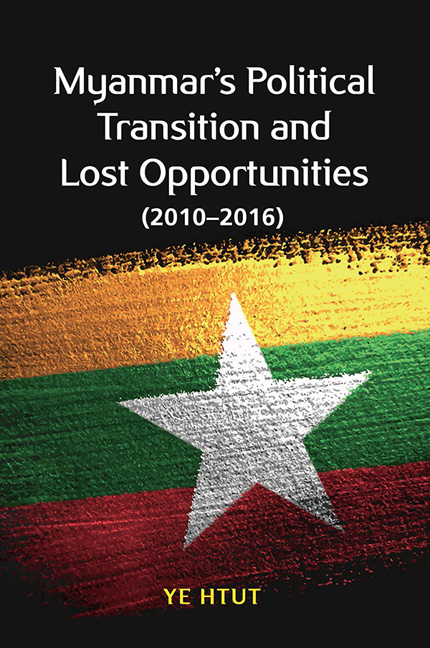Book contents
- Frontmatter
- Contents
- Foreword
- Acknowledgements
- Introduction: Myanmar's Political Reforms
- 1 The National Convention
- 2 The Constitution
- 3 The Union Solidarity and Development Party
- 4 Myanmar Spring and Aung San Suu Kyi
- 5 The Union Government
- 6 The Government and the Parliament
- 7 Shwe Mann's Checkmates
- 8 Turning Points
- 9 Media Reform
- Epilogue
- Appendix A President Thein Sein's Inaugural Address
- Appendix B President Thein Sein's First Address to the Cabinet
- List of Interviewees
- Index
- About the Author
- Plate section
- Frontmatter
- Contents
- Foreword
- Acknowledgements
- Introduction: Myanmar's Political Reforms
- 1 The National Convention
- 2 The Constitution
- 3 The Union Solidarity and Development Party
- 4 Myanmar Spring and Aung San Suu Kyi
- 5 The Union Government
- 6 The Government and the Parliament
- 7 Shwe Mann's Checkmates
- 8 Turning Points
- 9 Media Reform
- Epilogue
- Appendix A President Thein Sein's Inaugural Address
- Appendix B President Thein Sein's First Address to the Cabinet
- List of Interviewees
- Index
- About the Author
- Plate section
Summary
During Thein Sein's presidency there were many developments that hindered his reform programme. This chapter covers some of the decisions and actions that deeply affected the reforms. These became seen as turning points in the Thein Sein administration and marked some of its successes and failures.
The Myitsone Hydropower Project
The Myitsone Dam development project was intended to build a large hydroelectric power plant at the confluence of two rivers, the Mali Kha and the N'mai Kha. The two rivers come together to form the Ayeyawady River at a point 42 kilometres north of Myitkyina, the capital of Kachin State. It was to be one of seven dams under the Ayeyawady River Confluence Region Hydropower Project (CRHP) of the State Peace and Development Council (SPDC). According to the national thirty-year electrification strategic plan, on completion the seven dams would have created a total installed capacity of 20,000 megawatts. An eighth dam, Chipwi Nge Hydropower Project, completed in 2013, was installed to provide electricity for the construction projects.
The Ministry of Electric Power (MOEP) and the Japanese Kansai Electric Power Company (KEPO) surveyed the area in 2002 and KEPO established a small weather station at Tang Hpre village near the confluence in 2003. Chinese companies, including the Yunnan Machinery Equipment Import & Export Company and the Kunming Hydropower Institute of Design, surveyed the dam site in 2005.
The MOEP and China Power Investment Cooperation (CPI) signed a memorandum of understanding for Myitsone and the N'mai Kha and Mali Kha Ayeyawady River basin hydropower project on 28 December 2006. In 2007 the Changjiang Survey, Planning, Design and Research Co. (CDC) conducted geological drilling, reservoir inspection and hydrological measuring. CDC also concluded terms of reference for an environmental impact assessment and a feasibility research report in 2008–9. An environmental impact assessment was conducted by Myanmar's Biodiversity and Nature Conservation Association (BANCA) and a Chinese team from January to July 2009.
The total of eight hydropower plants would produce 18,499 megawatts and they were to be completed within fifteen years. Myitsone was the largest dam and was to be located 3.2 kilometres below the confluence of the Mali and the N'Mai. The dam was projected to produce 6,000 megawatts of electricity by 2017.
- Type
- Chapter
- Information
- Publisher: ISEAS–Yusof Ishak InstitutePrint publication year: 2019

